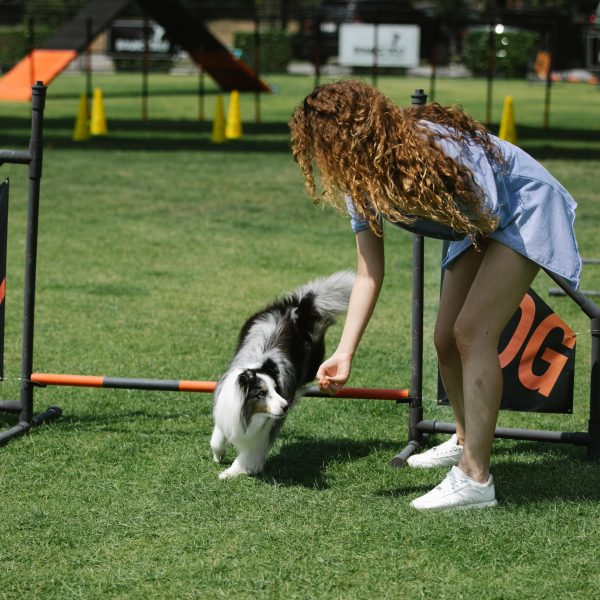The companionship between humans and their pets is rooted in affection, trust, and mutual understanding. However, like any relationship, challenges can arise that require thoughtful solutions. Behavioral issues in pets, ranging from minor irritations to more serious concerns, can strain this bond, causing frustration for both owners and animals alike. Fortunately, effective methods exist to address these challenges, resulting in harmonious households and deeper connections between humans and their beloved furry friends.
Understanding the Complexity of Pet Behavior Challenges
Pets can exhibit a range of problematic behaviors, varying from mere nuisances to potentially severe problems. These issues encompass aggression, incessant barking, destructive chewing, separation anxiety, and inappropriate elimination. Often, these behaviors stem from a combination of factors, including genetics, past experiences, socialization patterns, and the environment they inhabit. Identifying the underlying causes of these behaviors is a crucial step towards finding effective solutions.
The Significance of Timely Intervention
Taking swift action when behavioral problems arise is paramount. Ignoring these issues can allow them to escalate and become deeply ingrained habits that are increasingly difficult to correct over time. Furthermore, behavioral problems may detrimentally impact both the pet’s well-being and its relationship with its owner. Early intervention not only prevents problems from worsening but also maximizes the likelihood of achieving successful solutions.
Embracing Positive Reinforcement and Training
One effective approach to addressing behavioral problems in pets is through positive reinforcement training. This methodology involves rewarding desirable behaviors while redirecting or ignoring undesirable ones. By associating positive experiences with appropriate behavior, pets are more inclined to repeat those actions. This approach underscores the development of a strong bond between the pet and its owner, built on trust and cooperation.
Tailoring Approaches to Individual Pets
Since every pet possesses unique traits, there isn’t a one-size-fits-all solution to behavioral challenges. Effective solutions require an approach that factors in the pet’s personality, history, and specific issues. For instance, if a timid dog displays aggression due to fear, gradual desensitization techniques might be necessary. Conversely, a hyperactive dog could benefit from increased exercise and mental stimulation.
Seeking Professional Guidance
In some cases, seeking assistance from an animal behaviorist or certified dog trainer is imperative. These professionals possess deep insights into animal behavior, enabling them to objectively assess the situation and provide tailored guidance. They can offer valuable insights into the root causes of the problem and create personalized training plans designed to meet the unique needs of each pet. Seeking professional guidance not only expedites the problem-solving process but also ensures safety and effectiveness.
Consistency and Patience: The Key to Success
Addressing behavioral issues in pets demands a substantial amount of patience and consistency. Just as with humans, it takes time for pets to unlearn undesirable behaviors and develop positive habits. Pet owners must remain patient and committed to the training process even when progress seems slow. Consistency in training methods and cues is equally critical; mixed messages can confuse pets and hinder their progress.
Fostering a Supportive Environment
The living environment plays a pivotal role in shaping a pet’s behavior. Establishing an enriching environment can mitigate behavioral problems. This involves offering physical stimulation, setting appropriate boundaries, and meeting the pet’s basic needs. For example, if a dog becomes bored, it might resort to destructive chewing; however, providing toys and regular exercise can redirect its energy in a positive direction.
Prioritizing Positive Interaction
Maintaining a healthy relationship between pets and their owners is paramount throughout the problem-solving process. Approaches based on punishment can lead to fear and mistrust, exacerbating behavioral issues. Instead, emphasizing positive interaction by rewarding desired behaviors fosters a bond founded on trust, respect, and effective communication.
Sustaining Long-Term Behavior Changes
Achieving success in resolving behavioral problems is a gratifying accomplishment. However, it’s vital to remember that consistent upkeep is essential to prevent relapses. Similar to humans, pets can regress into old habits without regular training and positive reinforcement. By ensuring consistent training sessions, providing mental and physical stimulation, and reinforcing positive behaviors, long-term success can be maintained.
In Conclusion
Addressing behavioral challenges in pets is a journey that requires patience, dedication, and empathy. By identifying the underlying causes of behaviors, utilizing positive reinforcement training methods, seeking professional guidance when necessary, and fostering a supportive environment, owners can overcome challenges and forge stronger bonds with their pets. The process may not always be swift or effortless, but the rewards of having well-behaved and contented pets are undoubtedly worth the time and energy invested. Through guidance and effective problem-solving approaches, the connection between humans and their beloved pets can thrive for years to come, creating a joyful and enduring relationship.








